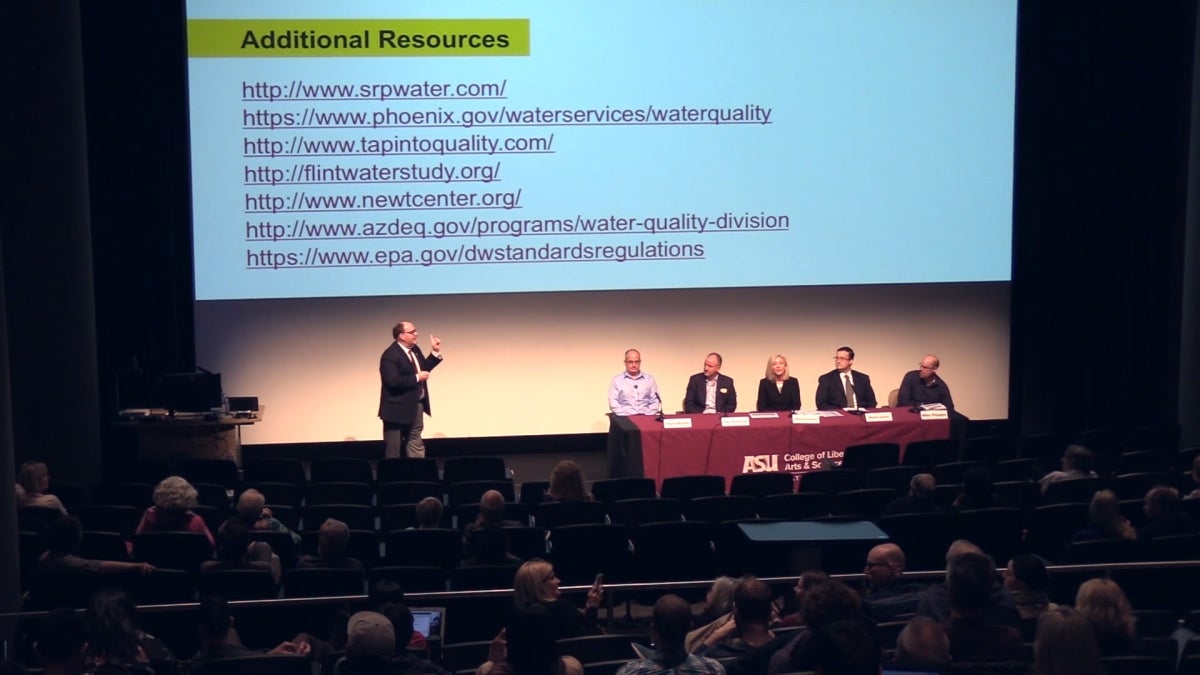ASU Insight: Behind the faucet — what impacts your drinking water quality?

Discussion panel on water quality in our communities.
Pierre Herckes, professor in the School of Molecular Sciences, recently presented a public lecture on water quality issues as part of the Dean of Science Public Lecture Series at ASU. The event also featured a panel of local experts on water quality: Paul Westerhoff, from the Ira A. Fulton School of Engineering at ASU; Rhett Larson from the Sandra Day O'Connor College of Law at ASU; Mike Ploughe who is a senior scientist at the Salt River Project; and Kathryn Sorenson, Director of Water Services for the City of Phoenix.
Pierre described many of the delicate factors that contribute to water quality, using the recent problems of Flint, Michigan as an example. When Flint switched their source of water from the City of Detroit water supply to the Flint River, small changes in the water chemistry, which on their own were not unsafe, caused dramatically increased leaching of lead, a known neurotoxin, from the Flint water system pipes, that made its way into the drinking water supply.
Pierre also discussed the local water supply, which has quite diverse sources, including the Colorado, Verde and Salt rivers, and also local wells. Mike Ploughe described the Salt and Verde River watersheds, which are the ultimate source of water in the Valley, and the importance of maintaining their health, and Kathryn Sorensen discussed how different areas in the Valley obtain water differently from the various water sources. Pierre then talked about the kinds of contaminants that can negatively influence water quality, and Rhett Larson described how water quality is regulated by law. The final subject addressed was how water is purified, including a discussion of chlorine and fluorine in water and Paul Westerhoff described water purification methods that are used locally.
The ASU School of Molecular Sciences is an academic unit of the College of Liberal Arts and Sciences